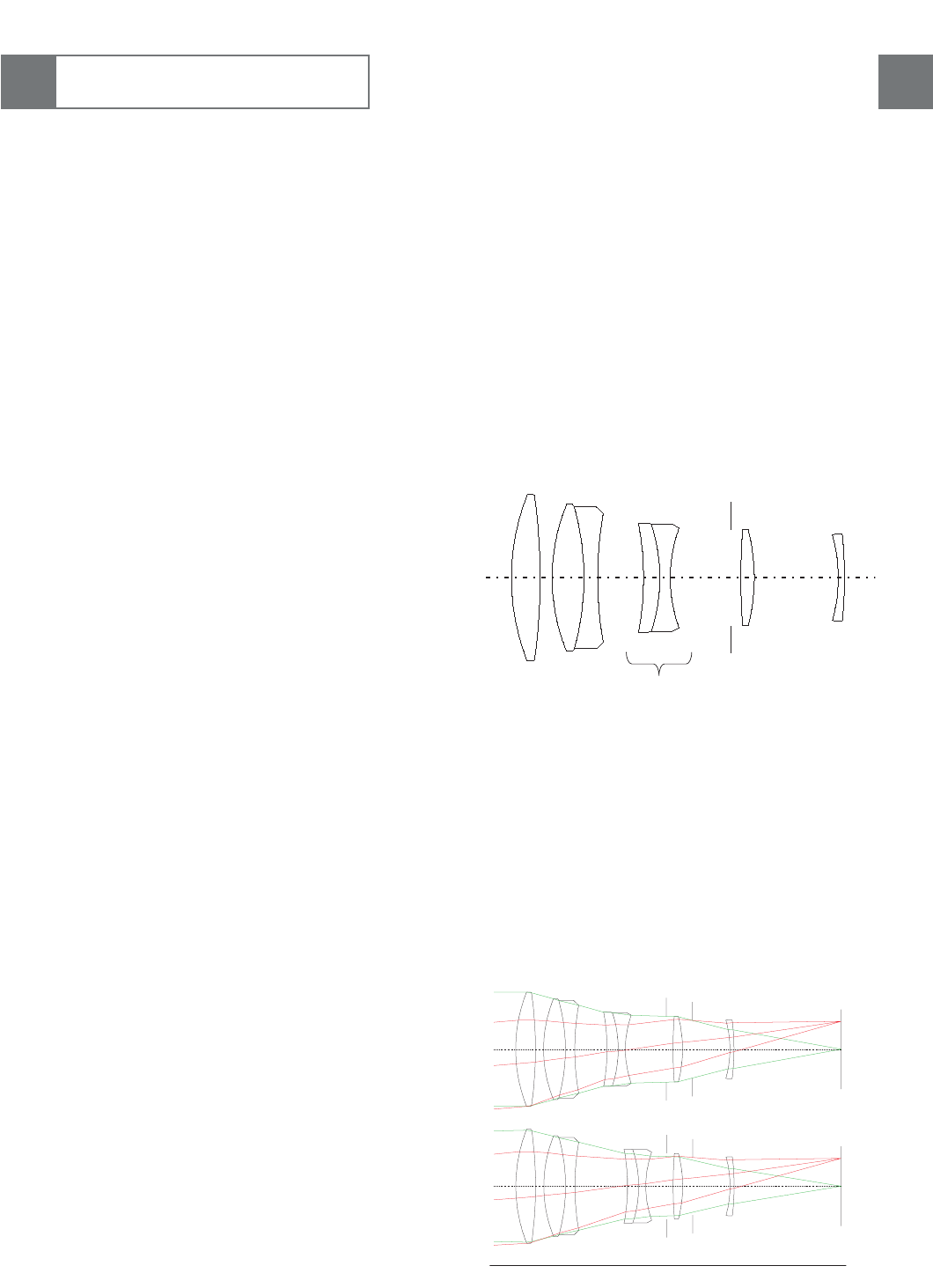
Chapter 3
Leica R-Lenses
5
Atmospheric turbulence and heat waves can destroy the image
quality at these large magnifications and one needs a skylight
filter with color film and a medium orange filter with black-and-
white film.
The discussion often arises as to whether a lens can be too
sharp, a question that is certainly relevant for both of these
lenses. In many discussions, sharpness and contrast are seen
as the destroyers of subtle tonal values.
This idea is associated with the effects of gradation of films
and papers. A steep gradation of a film or a paper with a high
contrast will accentuate small differences in brightness and
also reduce the number of tonal shades of the overall tonal
range. But these properties cannot be transferred to the optical
sharpness or modulation transfer.
Any lens should generate an accurate image of the subject.
Every detail (subject outline, textural detail, tonal value) is a
composition of very small point images of different brightness.
If we have a lens that is free from aberrations, every point will
be reproduced on film exactly as it is in the real world.
A lens with optical aberrations will reproduce these points with
some blur and the small differences in brightness will also be
diffused. The better the lens, the more accurate the image
reproduction and the finer the brightness differences that we
can discern.
The 280 mm f/4 Apo-Telyt-R lens can be combined quite effec-
tively with the Macro-Adapter-R. Then you can take pictures at
a distance of one meter (3’ 3 3/8”) from small animals that do
not let you approach too closely, like frogs. You may even com-
bine the Macro-Adapter-R and the Apo-Extender-R. This is also
true for the 180 mm f/2.8 Apo-Elmarit-R lens.
You might even use two Macro-Adapters together.
The only recommendation I can give is to be willing to experi-
ment and investigate which combination best suits your needs.
__ Optical considerations
The basic design of a telephoto lens consists of a converging
front lens with a positive focal length and a diverging second
lens with a negative focal length. The main optical problems
with telephoto lenses are distortion (solved quite early), secon-
dary spectrum and the longitudinal chromatic errors.
The first 180 mm lenses from Leitz had five elements in four
groups. Their design was derived from the 135 mm lenses. A
low number of elements reduced flare, but it also limited the
optical correction a bit. Chromatic correction was not optimal
and overall contrast was on the low side. Image quality was
quite good, especially because now one needed a lower magni-
fication of the negative. The breakthrough came with the 180
mm f/3.4 Apo-Telyt-R lens, a design that used new types of
optical glass.
For the first time, chromatic aberrations (color fringes) could
be reduced to negligible amounts. Multi-layer coating was used
sparingly, as these layers often create more problems than they
solve. Especially with strongly curved surfaces and with glasses
with high refractive indices, a uniform thickness over the entire
surface could not be guaranteed.
It seemed impossible, but with the 180 mm f/2.8 Apo-Elmarit-R
lens, image quality was improved significantly. With seven ele-
ments in five groups, its design is totally different from that of
the 180 mm f/3.4 lens, also with seven elements in four
groups.
Maximum quality is already reached at full aperture. From the
center to the edge of the image, a resolution of extremely fine
details with high micro-contrast is ensured. Especially with
fashion- and beauty photography, where hyper-realistic images
are required, these lenses are ideal. From a lens tester’s point
of view, the 180 mm f/2.8 Apo-Elmarit-R lens is not a challen-
ging lens: there is hardly a point to criticize! Thanks to its floa-
ting element design, performance in the close-up range is
excellent.













